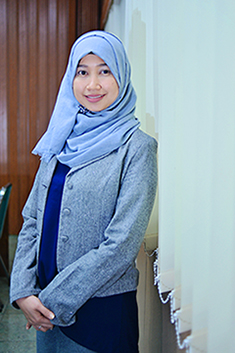Comparative Study of Densitometry and Videodensitometry for Quantitating the Active Pharmaceutical Ingredients Using Thin Layer Chromatography – Systematic Review
Downloads
Background: Chromatography is one of the analytical techniques widely used for the quality control process in the pharmaceutical industry. One of the analytical methods used in drug analysis is Thin Layer Chromatography (TLC). The analysis process of TLC can be performed using densitometry (scanner) or videodensitometry (videoscan). The principal analysis of densitometry (scanner) is based on the density measured from each spot on the TLC plate using a specific wavelength range, and videodensitometry (videoscan) is performed by taking pictures of the plate using a Visualizer at a specific wavelength. Objective: This review article discusses the application of densitometry and videodensitometry methods for quantitative analysis of pharmaceutical products. Methods: This study was conducted using a systematic review method using the PRISMA statement from January to April 2023. Four databases were searched: PubMed, ScienceDirect, Scopus, and Google Scholar with inclusion criteria: studies on thin layer chromatography analysis using densitometry and videodensitometry. Results: Based on the ten articles in this study, it is known that the active ingredient concentrations in pharmaceutical products can be determined using densitometry and videodensitometry. The statistical analysis results show no significant difference between the two methods' chemical concentrations of active ingredients in pharmaceutical products. Conclusion: TLC densitometry and videodensitometry is a valid methods analysis that can be used for quantitating the active pharmaceutical ingredient concentration in finished pharmaceutical products.
Alaerts, G., Van Erps, J., Pieters, S., Dumarey, M., van Nederkassel, A. M., Goodarzi, M., Smeyers-Verbeke, J. & Vander, H. Y. (2012). Similarity Analyses of Chromatographic Fingerprints as Tools for Identification and Quality Control of Green Tea. Journal of Chromatography B: Analytical Technologies in the Biomedical and Life Sciences; 910; 61–70. doi: 10.1016/j.jchromb.2012.04.031.
Amber, V. I. H. (2007). Digitally Enhanced Thin-Layer Chromatography: An Inexpensive, New Technique for Qualitative and Quantitative Analysis. Journal of Chemical Education; 84; 842–847.
Balekundri, A. & Mannur, V. (2020). Quality Control of the Traditional Herbs and Herbal Products: a Review. Future Journal of Pharmaceutical Sciences; 6; 1-9. doi: 10.1186/s43094-020-00091-5.
Bandaranayake, W. M. (2006). Quality Control, Screening, Toxicity, and Regulation of Herbal Drugs. Modern Phytomedicine: Turning Medicinal Plants into Drugs; 25–57. doi: 10.1002/9783527609987.ch2.
Bittner, M., Schenk, R. & Melzig, M. F. (2016) Alternative Approach to Species Identification of Actaea racemosa L. (syn. Cimicifuga racemosa (L.) Nutt., black cohosh) Herbal Starting Material: UV Spectroscopy Coupled with LDA. Phytochemistry Letters; 18; 220–225. doi: 10.1016/j.phytol.2016.10.001.
Campus, S. P. (2011). Science and Technology Journal. Science and Technlogy Journal; 5; 1-10.
Ege, M. (2021). The Hidden Danger in Phytopharmaceuticals: Adulteration. Phytopharmaceuticals: Potential Therapeutic Applications, 77–98. doi: 10.1002/9781119682059.ch4.
European Medicines Agency. (2022). Validation of Analytical Procedures: ICH Guidelines Q2(R2). Farmaceutski Glasnik; 2; 1–34.
Fichou, D. & Morlock, G.E. (2018). QuanTLC, an Online Open-Source Solution for Videodensitometric Quantification. Journal of Chromatography A; 1560; 78–81. doi: 10.1016/j.chroma.2018.05.027.
Gumieniczek, A., Hopkala, H. & Berecka, A. (2002) Densitometric and Videodensitometric Determination of Nadolol and Pindolol in Tablets by Quantitative HPTLC. Journal of Liquid Chromatography and Related Technologies; 25; 1401–1408. doi: 10.1081/JLC-120004755.
Gumieniczek, A., Inglot, T. & KoÅ„czak, A. (2011) Classical Densitometry and Videoscanning in a New Validated Method for Analysis of Candesartan and Losartan in Pharmaceuticals. Journal of Planar Chromatography - Modern TLC; 24; 99–104. doi: 10.1556/JPC.24.2011.2.2.
Hahn, E D. (2018). Applied Thin-Layer Chromatography. Weinheim: WILEY-VCH Verlag GmbH & Co. KgaA.
Harron, D. W. G. (2013). Technical Requirements for Registration of Pharmaceuticals for Human Use: The ICH Process. The Textbook of Pharmaceutical Medicine; 1994; 447–460. doi: 10.1002/9781118532331.ch23.
HopkaÅ‚a, H., Pomykalski, A., Mroczek, T. & Ostep, M. (2003). Densitometric and Videodensitometric TLC Determination of Timolol and Betaxolol in Ophthalmic Solutions. Journal of Planar Chromatography - Modern TLC; 16; 280–285. doi: 10.1556/JPC.16.2003.4.6.
Ibrahim, M. M., Kelani, K. M., Ramadan, N. K. & Elzanfaly, E. S. (2022). Smartphone as a Portable Detector for Thin-Layer Chromatographic Determination of Some Gastrointestinal Tract Drugs. ACS Omega; 7; 23815–23820. doi: 10.1021/acsomega.2c02482.
Komsta, Å., SkibiÅ„ski, R., HopkaÅ‚a, H. & Winiarczyk-Serwacka, M. (2007). Comparative Validation of Densitometric and Videodensitometric Determination of Lovastatin and Simvastatin in Pharmaceuticals. Chemia Analityczna; 52; 771–780.
Komsta, Å. & Misztal, G. (2005). Determination of Fenofibrate and Gemfibrozil in Pharmaceuticals by Densitometric and Videodensitometric Thin-Layer Chromatography. Journal of AOAC International; 88; 1517–1524. doi: 10.1093/jaoac/88.5.1517.
Kusumawati, I. (2021). A Great Challenge on the Reproducibility of Therapeutic Results of Phytopharmaceuticals. Edited by D.N.C. and K. Shah. USA: Scrivener Wiley.
Liang, Y. Z., Xie, P. & Chan, K. (2004). Quality Control of Herbal Medicines. Journal of Chromatography B: Analytical Technologies in the Biomedical and Life Sciences; 812; 53–70. doi: 10.1016/j.jchromb.2004.08.041.
Little, T. A. (2016). Establishing Acceptance Criteria for Analytical Methods. BioPharm International; 29; 2–6.
Lucio-Gutiérrez, J. R., Coello, J. & Maspoch, S. (2012) Enhanced Chromatographic Fingerprinting of Herb Materials by Multi-Wavelength Selection and Chemometrics. Analytica Chimica Acta; 710; 40–49. doi: 10.1016/j.aca.2011.10.010.
Methley, A. M., Campbell, S., Chew-graham, C., Mcnally, R. & Cheraghi-sohi, S. (2014). PICO, PICOS and SPIDER: A Comparison Study of Specificity and Sensitivity in Three Search Tools for Qualitative Systematic Reviews. BMC Health Services Research; 2014; 1-10. doi: 10.1186/s12913-014-0579-0.
Misztal, G. & Komsta, L. (2005). Determination of Bezafibrate and Ciprofibrate in Pharmaceutical Formulations by Densitometric and Videodensitometric TLC. Journal of Planar Chromatography - Modern TLC; 18; 188–193. doi: 10.1556/JPC.18.2005.3.3.
Page, M. J., McKenzie, J. E., Bossuyt, P. M., Boutron, I., Hoffmann, T. C., Mulrow, C. D., Shamseer, L., Tetzlaff, J. M., Akl, E. A., Brennan, S. E., Chou, R., Glanville, J., Grimshaw, J. M., Hróbjartsson, A., Lalu, M. M., Li, T., Loder, E. W., Mayo-Wilson, E., McDonald, S., et al. (2021). The PRISMA 2020 Statement: An Updated Guideline for Reporting Systematic Reviews. The BMJ; 372; 1-9. doi: 10.1136/bmj.n71.
Reich, E. & Schibli, A. (2014). High-Performance Thin-Layer Chromatography for the Analysis of Medicinal Plants, High-Performance Thin-Layer Chromatography for the Analysis of Medicinal Plants. Stuttgart: Thieme Medical Publishers.
Renger, B., Végh, Z. & Ferenczi-Fodor, K. (2011) Validation of Thin Layer and High Performance Thin Layer Chromatographic Methods. Journal of Chromatography A; 1218; 2712–2721. doi: 10.1016/j.chroma.2011.01.059.
SkibiÅ„ski, R., Komsta, Å. & KosztyÅ‚a, I. (2008) Comparative Validation of Quetiapine Determination in Tablets by NP-HPTLC and RP-HPTLC with Densitometric and Videodensitometric Detection. Journal of Planar Chromatography - Modern TLC; 21; 289–294. doi: 10.1556/JPC.21.2008.4.12.
SkibiÅ„ski, R. & Misztal, G. (2004). Determination of Fluvoxamine and Moclobemide in Tablets by Densitometric and Videodensitometric TLC. Journal of Planar Chromatography - Modern TLC; 17; 224–228. doi: 10.1556/JPC.17.2004.3.12.
SkibiÅ„ski, R. & Misztal, G. (2005). Determination of Citalopram in Tablets by HPLC, Densitometric HPTLC, and Videodensitometric HPTLC Methods. Journal of Liquid Chromatography and Related Technologies; 28; 313–324. doi: 10.1081/JLC-200041345.
SkibiÅ„ski, R., Misztal, G. & Kudrzycki, M. (2003). Determination of Fluoxetine and Paroxetine in Pharmaceutical Formulations by Densitometric and Videodensitometric TLC. Journal of Planar Chromatography - Modern TLC; 16; 19–22. doi: 10.1556/JPC.16.2003.1.4.
Srivastava, M. (2011). High-Performance Thin-Layer Chromatography (HPTLC), High-Performance Thin-Layer Chromatography (HPTLC). Heidelberg: Springer Berlin.
USP. (2021). Validation of Compendial Procedures. Maryland: USP.
Xie, P., Chen, S., Liang, Y. zeng, Wang, X., Tian, R. & Upton, R. (2006). Chromatographic Fingerprint Analysis - A Rational Approach For Quality Assessment of Traditional Chinese Herbal Medicine. Journal of Chromatography A; 1112; 171–180. doi:10.1016/j.chroma.2005.12.091.
Yuwono, M. & Indrayanto, G. (2005) Validation of Chromatographic Methods of Analysis. Profiles of Drug Substances, Excipients and Related Methodology; 32; 241–260. doi: 10.1016/S0099-5428(05)32009-0.
Copyright (c) 2023 JURNAL FARMASI DAN ILMU KEFARMASIAN INDONESIA

This work is licensed under a Creative Commons Attribution-NonCommercial-ShareAlike 4.0 International License.
1. The copyright of this journal belongs to the Editorial Board and Journal Manager with the author's knowledge, while the moral right of the publication belong to the author.
2. The formal legal aspect of journal publication accessibility refers to the Creative Commons Attribution-Non-Commercial-Share Alike (CC BY-NC-SA), which implies that the publication can be used for non-commercial purposes in its original form.
3. Every publication (print/electronic) is open access for educational, research, and library purposes. In addition to the objectives mentioned above, the editorial board is not responsible for copyright infringement


.jpg)















